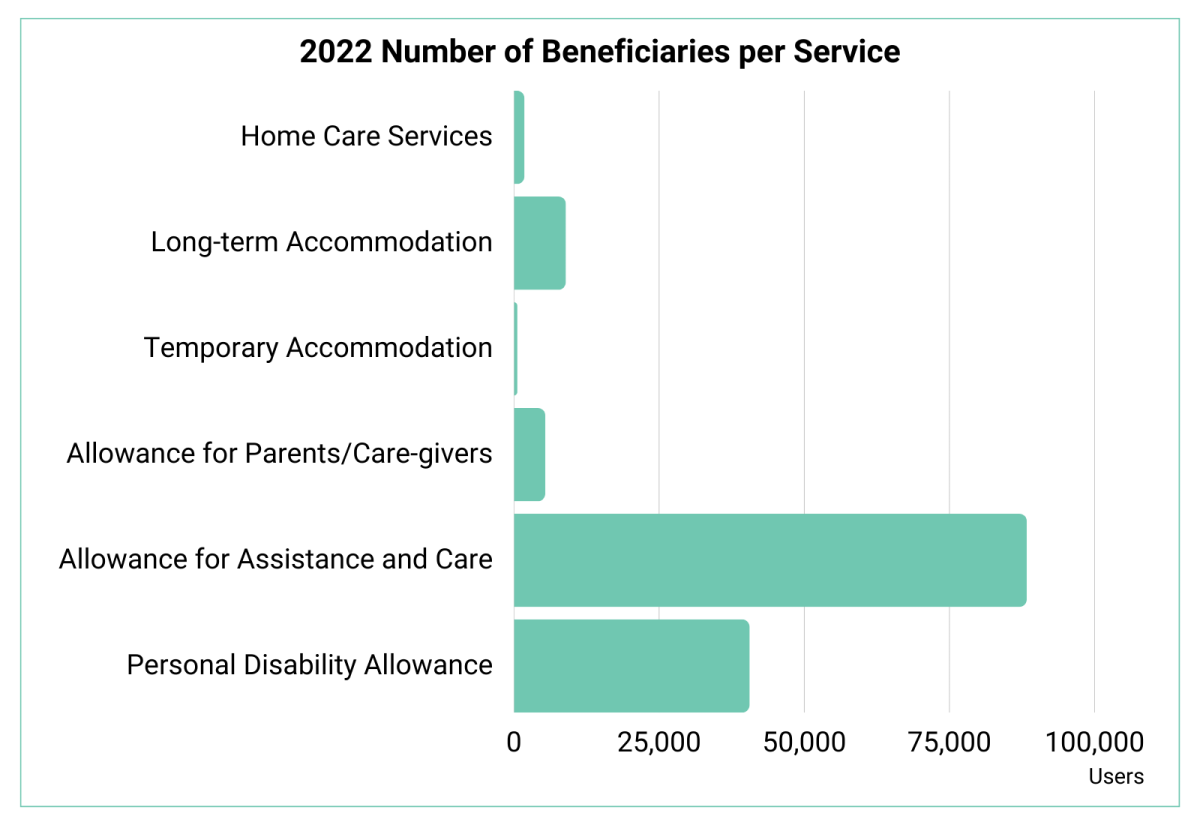Recommendation
Improve social services quality
- social services legal, policy and practice framework;
- a common methodology for calculating the prices of social services;
- a common information system for the recording, monitoring, analysis and exchange of data on users and social services;
- strengthen the human potential of social services providers.
Social Services Policy and Legal Framework
In recent years, strategic documents have been adopted to diversify and enhance the accessibility and quality of social services in Croatia, ultimately ensuring improved living conditions for all vulnerable groups.
The adoption of the Social Welfare Act, has increased the adequacy of the main social benefits and recognises access to social services as a right by specifying norms that ensure access to social services. The law is accompanied by several strategic plans:
- The National Plan for the Development of Social Services (2021-2027) alongside its corresponding Action Plan (2021-2024),
- The National Plan for the Fight against Poverty and Social Exclusion (2021-2027), along with its associated Action Plan (2021-2024),
- The National Plan for the Equalization of Opportunities for Persons with Disabilities (2021-2027) alongside its respective Action Plan (2021-2024).
Responsibility for long-term care is divided between the health and social care systems, detailed separately in each system. An inter-departmental working group with representatives from both the ministries of health and social policy is currently developing the Operational Plan for the Development of Long-Term Care 2023-2027 to bridge the health care and social welfare systems for the delivery of long-term care services.
Main Agencies
Social welfare services are predominantly delivered by the Ministry of Labour, the Pension System and Family and Social Policy, the Regional offices of the Croatian Institute for Social Work (formerly known as Social Welfare Centres) and the Ministry of Health – Register for Persons with Disabilities. The Ministry of Labour proposes laws, passes regulations on criteria for the provision of social services, and concludes contracts with social services providers.
SOCIAL SERVICES INVESTMENT
Funds for financing social welfare come mostly from the state budget. The total budget of the Ministry of Labour for 2022 was €7,837,193.460, which also includes pension costs.
The total spending on social services in 2022 was €166,458,826 - 2.12% of the Ministry of Labour's budget. From April 2022 this included government measures to reduce the impact of energy price increase on social service providers.
The total government budget for public spending in 2022 was €29,327,387.832. The share of expenditure on social services in the 2022 state budget was 0.57 %.
SOCIAL SERVICES COVERAGE
Long-term Care
Residential Care
There are 29,414 publicly financed places in residential care facilities, accounting for 3.68% of people aged 65+, far lower than the 5% EU average. In 2021, the total number of people aged 65+ was 507,721.
Day Centres
According to the Ministry, in 2021, 1,320 adults used day centres. Of these, 760 persons were adults with physical, intellectual or sensory impairments; 312 were adults with mental impairments; 124 were unable to take care of their basic needs due to age or infirmity, and 283 were homeless.
Home Care
Based on a comparison of a number of contracts, an average of 18 hours per month are paid by the state. It is difficult to calculate on a weekly basis because some beneficiaries have an approved number of hours per year for one service. For example, some beneficiaries are entitled to 1 hour, 8 times per year to a service to landscape their garden.
Support for People with Disabilities
According to 2022 data, there are 624,109 people with disabilities (16% of the total population) in Croatia, but there is no data on the percentage of persons who receive support in residential care. The graph shows the different types of support provided.

Minimum Income Schemes
It is important to clarify that in Croatia, both ‘social assistance’ and ‘social benefit’ are terminologies used to refer to cash-based benefits.
According to current data, the number of social assistance beneficiaries is 51,454, or 1.2% of the population. The guaranteed minimum benefit is €132.72 per month.
Child Protection Services
In 2021, there were a total of 2,671 children in state care, of which 691 children were in institutions, and 1,980 children were in foster families. This means that 74% of the total number of the children in state care are in foster family as non-institutional care.
Services for Female Victims of Violence
There are 25 shelters with a total capacity of 357 users. According to the data provided by all 25 shelters, capacity occupancy ranges up to a maximum of 64%. In addition to the work of shelters, since 2019, one-year projects related to the work of counselling centres for victims of violence and counselling centres for victims of sexual violence have been implemented.
Services for Homeless People
There are 13 shelters for homeless people with a total capacity of 349 users. 511 homeless persons were registered in 2020, 412 were men, and 99 were women. However, it is estimated that the actual number of homeless people is significantly higher.

